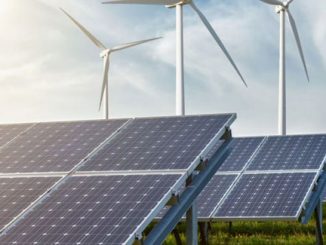
As the country with the fourth largest installed renewable capacity in the world, India’s renewable energy sector has made rapid strides, with a steady addition in capacity year on year. Some of the factors that contributed to this impressive rate of capacity addition – matched with a steep decline in tariffs – are private sector-led development, falling technology costs, auction-led project allocation and encouragement of policymaking by the government. Today, renewables contribute approximately 9 per cent of India’s electricity generation mix and are well positioned to contribute 15-20 per cent of the generation mix in the next 10 years.
Resilience of the renewable energy industry
Over the past 15 months, global supply chains have seen tremendous disruptions. The renewables industry in India also faced significant delays in the commissioning of projects that rely heavily on the import of critical equipment and material due to various tariff and non-tariff barriers. Despite the short-term challenges posed by the pandemic such as construction work being put on hold and cost overruns, given the volatile global economy, the wind and solar segments in India continue to remain attractive to investors. Backed by long-term contracts and sales being relatively insulated from fluctuations in consumer demand, wind and solar continue to remain preferred investment avenues.
Need for new policy reforms
India’s energy mix in the coming decade, wherein renewables are expected to have a sizeable double-digit percentage share, will require a fresh set of reforms. Fundamentally, these will need to include recognition of the true cost of renewables by making subsidies explicit, since the policy of passing on the costs of renewable interstate transmission and intermittency on to conventional generators and discoms now appears to have run its course. The government has been very encouraging and accommodative of the industry’s suggestions, enabling policymakers and the industry to work in unison to try and fix inherent policy bottlenecks and legacy issues. In addition to the policies that shape the renewable energy sector, issues such as the number of large and unresolved non-performing assets in the thermal power and discom segment have cast their shadow on the integrity of the Indian financial sector.
 Key challenges in the sector
Key challenges in the sector
Although the second wave of the pandemic has subsided in most parts of the country and project commissioning work is now back in full swing, several legacy issues (operational and financial) continue to pose challenges. Foremost among these are land and infrastructure availability and cost. Simplifying land acquisition procedures and digitalising land records would greatly streamline project development across the sector. Further, sustainable and long-term resolution of issues emerging from the intersection of renewable energy project sites and the natural habitats of protected wildlife, such as the Great Indian Bustard, will be critical going forward.
The incumbent business models and market mechanisms are at the cusp of disruptions caused due to natural market progression, technological advancement and discoms’ responses to their challenges. Easy access to affordable finance has been a long-standing problem for developers in India. Sovereign risks, policy risks and erratic discom payments are some of the project financing hurdles that need to be addressed.
The Covid-induced economic recession in India has created an urgent need to ramp up investments and create much-needed jobs. As the country looks to enhance economic activity, investing in green projects can support India’s move to a low-carbon pathway. The country is now entering the next decade of renewable energy growth. This sector is suitably placed to contribute towards reviving India’s economic activity and making the country a global renewable energy powerhouse in the process.



